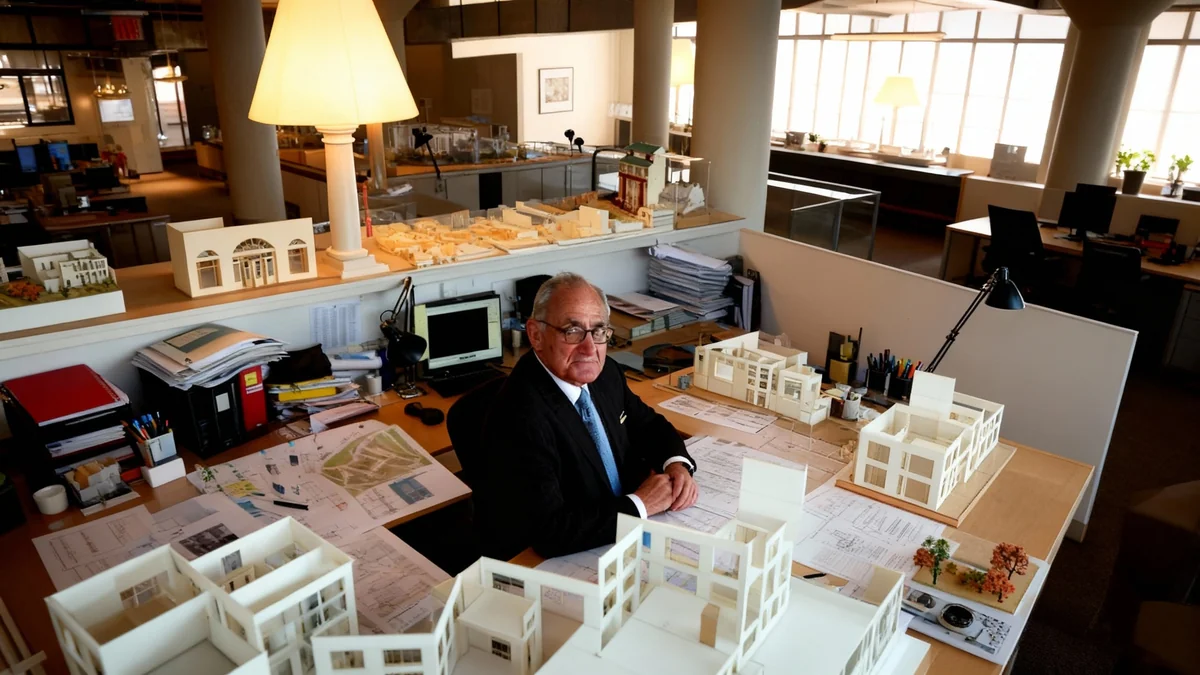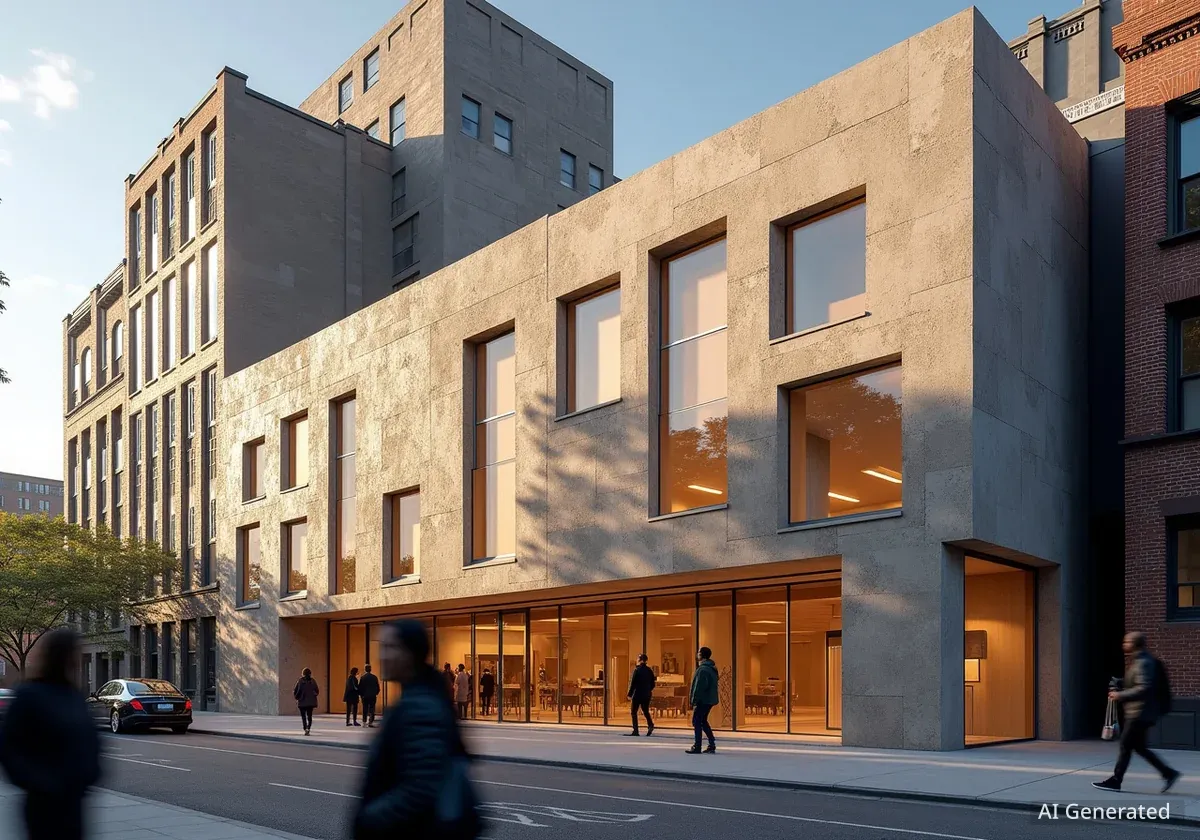A recent survey conducted by Archinect reveals a significant division among architects, recruiters, and job seekers regarding the ongoing value of cover letters in the architecture job market of 2025. While a slight majority of all respondents believe cover letters remain important, a deeper look shows employers value them far more than job seekers do.
The survey, part of a broader study on architectural recruitment, aimed to understand the relevance of cover letters in an evolving professional landscape. The findings highlight differing perspectives, possibly influenced by generational shifts and technological advancements.
Key Takeaways
- Overall, 54% of respondents see cover letters as valuable.
- Employers and recruiters are 25 percentage points more likely than job seekers to find cover letters valuable.
- Many job seekers view cover letters as a 'holdover from another time' and a 'waste of time'.
- Some applicants include cover letters even when not requested, fearing they might appear careless.
- The rise of AI and remote work may be changing perceptions of traditional application methods.
Differing Views Across the Architecture Community
The survey asked readers if cover letters were valuable for an architecture job application. The results showed a community split. Specifically, 54% of all respondents said yes, while 46% said no. This narrow margin suggests a lack of consensus within the profession.
To ensure a broad understanding, the same question was posed to Archinect's audiences on LinkedIn and Instagram. The outcomes mirrored the website survey. On LinkedIn, 45% found cover letters valuable, while 55% did not. Instagram saw 56% respond yes and 44% no.
Survey Snapshot
- Archinect Website: 54% Valuable, 46% Not Valuable
- LinkedIn: 45% Valuable, 55% Not Valuable
- Instagram: 56% Valuable, 44% Not Valuable
Archinect's website survey also explored whether a cover letter should be submitted even if the job advertisement did not explicitly ask for one. Here, 58% believed it should be included, contrasting with 42% who thought it unnecessary. This indicates a group of respondents who, despite questioning the letter's value, still advocate for its submission.
Reasons for Continued Submission
There are several potential reasons for this behavior. Applicants may wish to avoid appearing careless in a competitive job market. They might also fear being overlooked compared to candidates who do provide a letter. This suggests that the cover letter's endurance might stem less from its informational utility and more from its role in signaling an applicant's intent and diligence.
Employer-Job Seeker Divide
The most striking finding emerged when comparing the opinions of employers and job seekers. Each group represented approximately 50% of the survey participants. On the question of cover letter value, a significant difference appeared:
- 66% of employers and recruiters considered cover letters valuable.
- Only 41% of job seekers shared this view.
This means employers were 25 percentage points more likely to see cover letters as valuable. This gap highlights a clear disconnect between those hiring and those seeking employment.
The trend continued when respondents were asked if a cover letter should be submitted even when not requested. 64% of employers and recruiters said yes, compared to 51% of job seekers. Employers were 13 percentage points more likely to encourage sending a cover letter regardless of explicit instruction.
"The cover letter is a chance for the candidate to tell us more about themselves in a personal way. It can give context to the resume, and is an opportunity for them to say why they are interested in the firm, what they are seeking in their next position, and why they would be a strong candidate. The letter also allows us to assess written communication skills, which are still relevant with the emergence of AI."
— An employer from a large New York firm
Employer Perspectives on Cover Letters
Many employers emphasized the practical benefits of cover letters. They view them as a tool to assess a candidate's fit for the firm and their communication skills. A cover letter can also demonstrate an applicant's prior knowledge of the company.
In an era where CVs and portfolios can be sent to numerous firms with ease, some employers see cover letters as a filter. Requiring a personalized letter may lead to applications from candidates with a genuine interest in the specific studio or its work. This helps ensure a more targeted pool of applicants.
Employer Benefits Cited:
- Verifies candidate's fit with the firm's culture.
- Assesses written communication skills.
- Demonstrates genuine interest in the specific company.
- Provides context to resumes and portfolios.
However, a minority of employers expressed dissatisfaction with the current state of cover letters. One employer noted that while letters offer a chance to understand applicants better, they often feel like companies are seeking flattery. Another described typical cover letters as "unnecessary resume padding and fluff piece." They added that only "unique cover letters get attention, but generic boilerplate stuff is glossed over."
Job Seeker Frustrations
Among job seekers, the dissatisfaction was more pronounced. While some acknowledged the positive aspects, such as a more human introduction, many expressed skepticism and frustration. A common sentiment was that cover letters are a "holdover from another time."
"I think they are a holdover from another time. They were intended as an introduction to the candidate and a means of expressing interest in a position. Today, the resume and portfolio should contain concise overviews of a candidate’s experience and abilities with enough info for the employer to determine whether they want to schedule a formal interview. The interview itself is where you go into detail about your skills/experience. A cover letter is a dinosaur."
— A job seeker respondent
Many job seekers believe that resumes and portfolios should provide enough information for an employer to decide on an interview. The interview itself should be the place for detailed discussions about skills and experience. They view the cover letter as an outdated requirement.
Some respondents also expressed strong opposition to the dynamic created by writing bespoke letters. One job seeker described cover letters as feeling like "humiliation rituals." Another highlighted the perceived waste of effort:
"I think the whole process is just a waste of time for those who are seeking employment. It's truly saddening that we take our time and energy to put effort toward other people who never read our letters. It's an unfair give and take. Why should we continue to waste our time and energy on firms that don't read our letters? Why do we care to impress a firm that doesn't even have the leadership quality of respect? Respect toward us, the applicants who take their time out of their lives to apply for jobs that we need to survive."
This quote points to the power imbalance in the employment process. Applicants often feel compelled to pitch themselves to decision-makers. However, employers also face similar pressures when competing for client commissions. Both sides experience frustration when their efforts do not yield desired results.
Evolving Labor Market Dynamics
The frustrations voiced in this survey reflect broader shifts in the architectural labor market. Over the past five years, a new generation of designers has begun to question long-standing professional norms. Several factors contribute to this change.
Technological Impact
Technological advancements, including social media and artificial intelligence, are changing how people communicate and organize. AI, in particular, has sparked debates about its role in tasks like writing cover letters. An earlier Archinect experiment found that readers believed AI could write a cover letter equal to or better than humans.
Impact of Remote Work
The widespread adoption of remote work during the COVID-19 pandemic also played a significant role. Before the pandemic, a person's identity was often closely tied to their occupation. The disruption caused by working from home, however, appears to have weakened this link.
Pandemic's Influence on Work
- 66% of unemployed Americans considered changing their occupation during the pandemic.
- Remote work led to deep introspection about job meaning and fulfillment.
- This shift contributes to a generation more willing to challenge workplace norms.
The experience of reducing work to hours in front of a computer screen, without typical office interactions, led many to re-evaluate their career choices. This introspection has created a generation of architectural workers more inclined to challenge traditional labor market practices.
This generation is increasingly identifying exploitative aspects within the profession. Issues such as unpaid overtime, internships, poor workplace conditions, and inadequate remuneration are being called out. In response, there is a growing demand for reform and organized efforts to achieve it.
The divergence in opinions on cover letters between employers and job seekers may be a symptom of a larger divide. It reflects the tension between those who view job applications as a crucial step in a deserving career, and those who feel increasingly disconnected from the very profession they are trying to enter or advance within.




